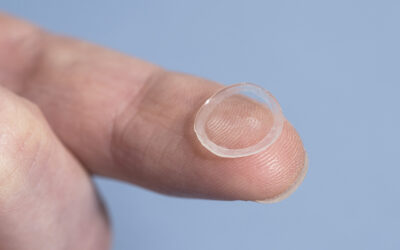Researchers from China and the USA have achieved controlled (bio-)macromolecular reactions in porous liposomes. In the developed liposome nanoreactors, reactions are triggered by small molecules that can selectively enter through membrane pores. Larger macromolecules can be combined in a lossless way, when two liposomes are fused using membrane fusion proteins.
The plasma membrane is a natural, protective layer for cells and is involved in various cellular functions. Additionally, the cell membrane provides a stable microenvironment for biochemical reactions. Liposomes are artificially manufactured spherical vesicles that mimic the plasma membrane. These vesicles contain an aqueous core confined by a lipid bilayer, which acts as a permeable barrier. There is significant interest in utilizing liposomes as nanoreactors, since they offer confined environments that can result in significant changes to chemistry. They are ideal for applications where biocompatibility and miniaturization are critical. As a biomedical tool, liposomes exhibit little to no toxicity and can preserve drug molecules in a stable environment. For these reasons, catalyst-loaded liposomes for intracellular enzymatic therapy are expected to be the next generation of drug delivery systems.
While liposomes are seen as ideal nanocontainers, their lipid membranes are impermeable to macromolecules, ions, and small molecules, essentially making the inner core a closed space. To overcome this limitation, scientists have tested the use of porous liposomes generated by membrane phase changes or by pore formation proteins. While porous liposomes allow some small molecules and ions to interact with the encapsulated reagents, only molecules smaller than the pore diameter can be delivered. The lipsomes acting as ‘bouncers’, admit only those molecules they want to based on size.

The reaction in a porous liposome nanoreactor triggered by small ions.
The group of Dr. Jiajie Diao shows that liposomes can provide a suitable environment for nanoreactions, by monitoring conformational changes of DNA triggered by UO22+ ions. Moreover, they demonstrate that SNARE-reconstituted liposomes can function as two-compartment nanoreactors for large macromolecules, such as dye-labeled DNA, through membrane fusion in a fast and regulated manner. Their novel approach overcomes limitations associated with inserting molecules larger than the threshold pore size of porous lipid membranes. However, further tools are required in order to realize a controlled onset of the membrane fusion reaction. The authors further mention that, to realistically mimic biochemical reactions, a more complex environment with multiple reactants should be created.

















